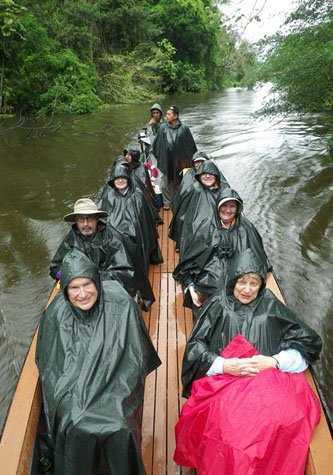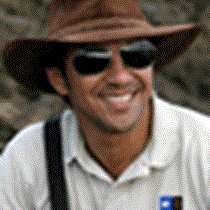It is five in the morning and I am already awake. It is still dark outside, with just a little glow at the distance that shows the inevitable daylight approaching. Even at this time of the morning, I wasn't alone. There were already a couple of guests enjoying a cup of coffee, and another one already exercising. I guess they were just as excited as I was to start the day, as I can't get enough of the Amazon rain forest.
We didn't have to wait too long to see the daylight break through, and in no time we were boarding the skiffs and off to explore the Ucayali River.
For the past few days, we have been navigating up the Ucayali, and we are now in a section of the river known for its specific type of wildlife. Shortly after we started our skiff ride, we were already observing and photographing the elusive pigmy marmoset, known locally as "leoncito." This tiny primate (one can fit inside a shirt pocket) is found between the branches of the trees feeding on its sap, its favorite food and main source of its diet. An entire family of pigmy marmosets were climbing the trees and jumping from branch to branch. It was simply delightful to see them so active in the morning!
As we continued our skiff ride, we explored the "Aguajales" which referred to the concentration of a palm tree species known locally as Aguajal. These gigantic palm trees are the habitat for the blue and yellow macaws, which nest in the dead tree trunks of the palm trees. We successfully found them, not only perched on the branches, but also flying in the surrounding areas.
The morning couldn’t get better than that, but we continued to found colorful birds and even a sloth, sound asleep in its tree!
The after-breakfast outing took place at Belluda Caño; this blackwater tributary of the Ucayali River was phenomenal to observe birds and a new species of monkey for our current trip, the night-owl monkey. This primate lives within the hollow tree-trunks in groups of more than five individuals, usually all related. Their big eyes were attentively observing us, just with as much curiosity as we were observing them.
As we were photographing the owl monkeys, we noticed that one individual was climbing down the branches. To our surprise, it wasn’t a monkey but a bicolor porcupine, which was unusually active at daytime.
It was almost time to return to the ship when the rain forest showed us the reason why it is called a “rain” forest as a heavy rain started and lasted for the rest of the morning and part of the afternoon. As if planned, the rain stopped just as we were disembarking for our afternoon skiff ride at the Dorado River.
The freshness of the air felt great in our faces, as we rode along the river on the skiffs looking for wildlife. Blue and yellow macaws, toucans, hawks, hornet screamers, and even the prehistoric-looking bird called hoatzin were some of the afternoon sightings. By the time we were returning to the ship, it was already dark, and we found ourselves looking for caimans in the dense water-based vegetation of the riverbanks. The caiman’s little eyes were shinning back in the dark, as we used the local technique of illuminating the area with flashlights. Our successful “caiman hunting” ride was only a nice ending to a phenomenal day!







